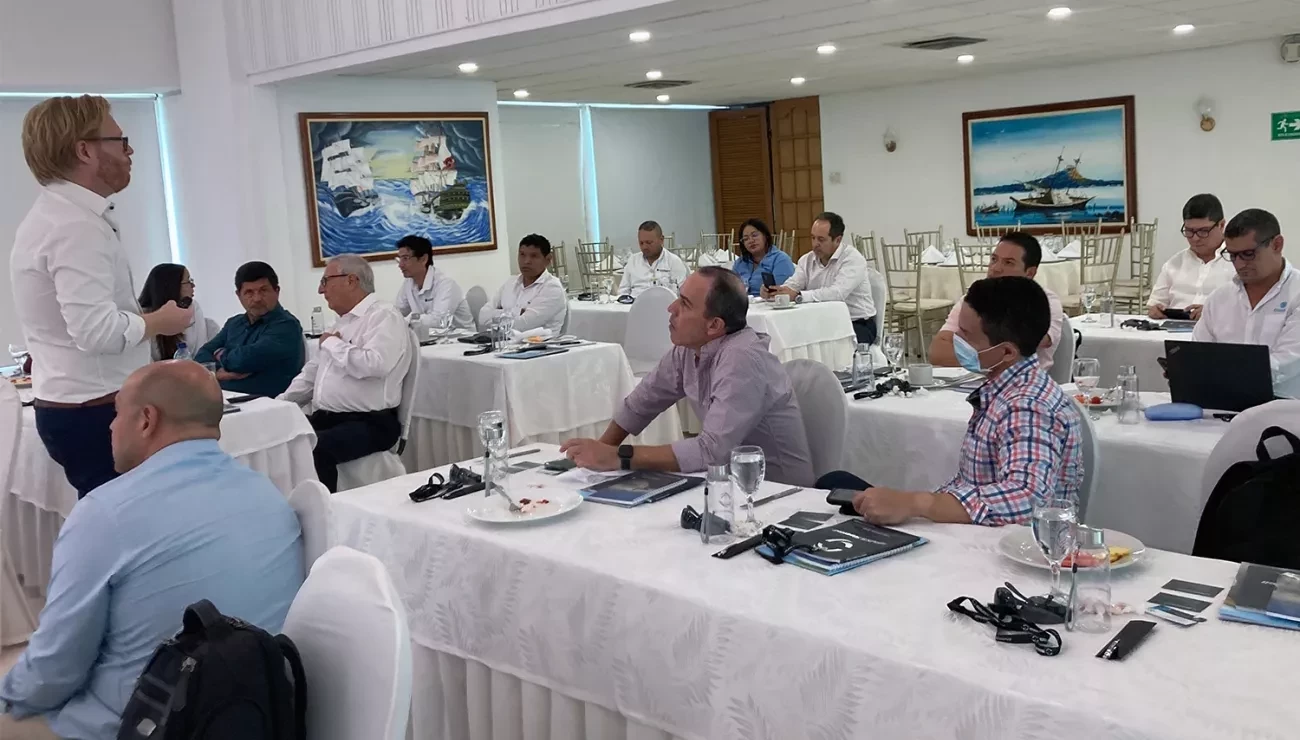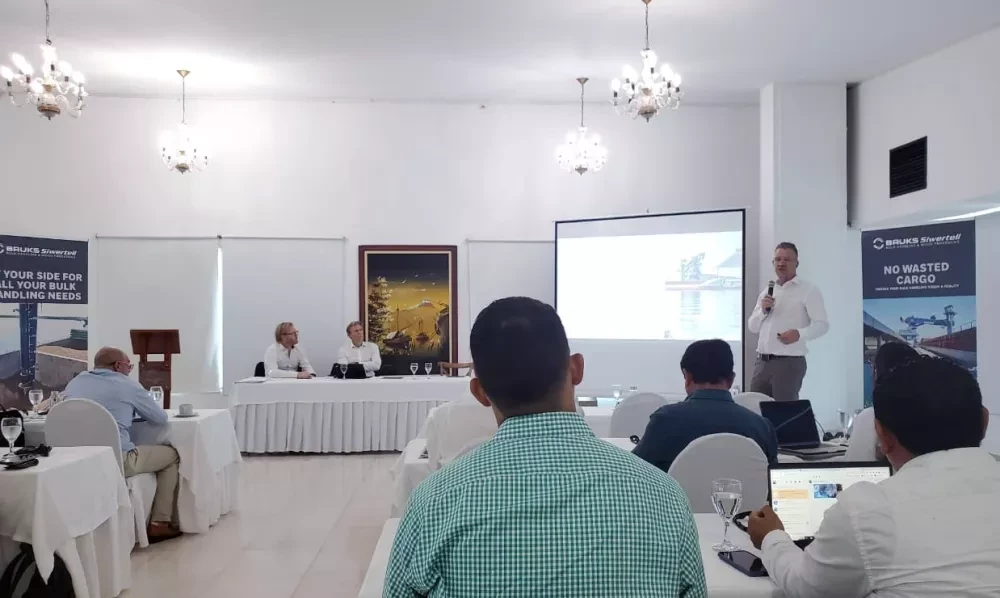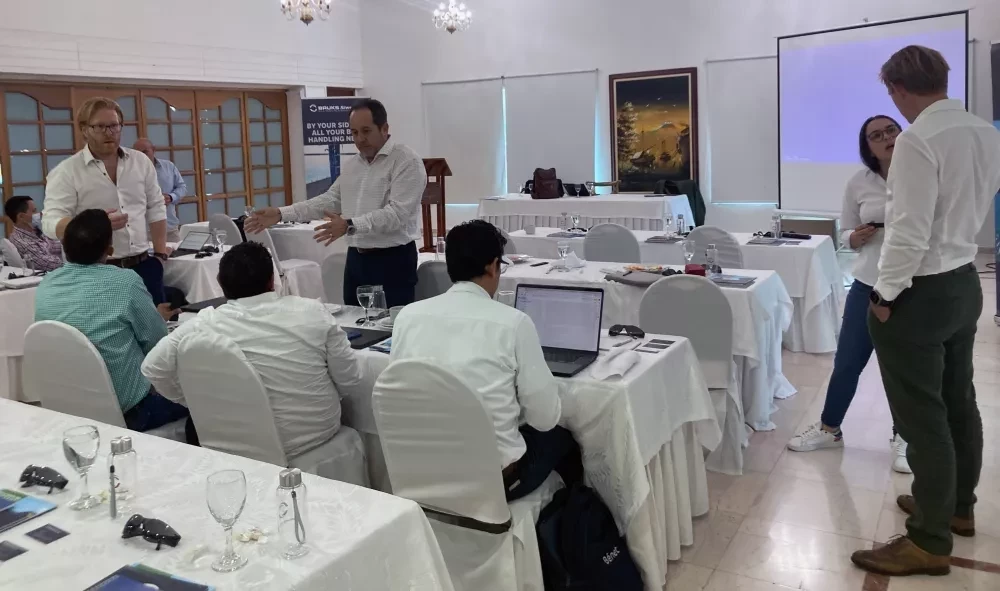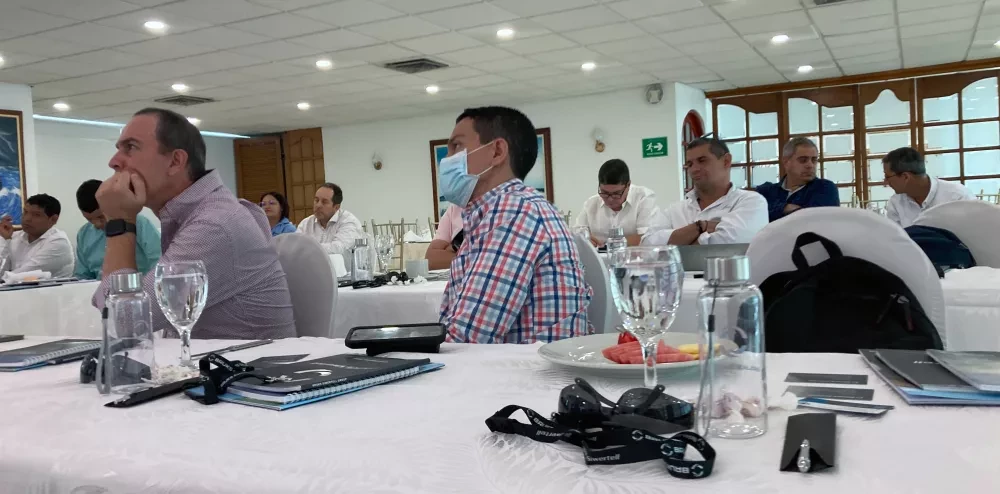
Agri-bulks take center stage at Bulk Day Seminar in Colombia
4 Dec 2023At a time when the world’s economies are revisiting established trade patterns in raw materials, port operators are eager to use the best available technology to facilitate these rapid changes in the status quo, by reducing waste and eliminating slack from their cargo infrastructure.
Colombia, a country where agri-bulks including corn and wheat are among the top imports, is no exception. Experience from installations around the world has shown that these cargoes benefit considerably from Siwertell ship unloading and loading equipment.
At Bruks Siwertell’s most recent Bulk Day Seminar, a one-day event held in October 2023 at Cartagena Bolivar, Club Naval, Colombia, Group Sales Manager Patrik Henryson and Per Hansson, Sales Director, shared some of this experience with the event’s many invited attendees. Following this, Daniel Frostberg, Service Director, outlined Bruks Siwertell’s commitment to through-life equipment support.

Big change, small footprint
There are few dry bulk trades for which a Siwertell mechanical screw unloader cannot add significant value. In particular, Henryson highlighted the dramatic contrast between a mechanical grab unloader – many of which are still used in ports around the world – and a continuous Siwertell screw-type ship unloader of the same capacity; the Siwertell equipment being nearly half of the rail span and quayside footprint of the grab crane.
A corresponding decrease in weight, as well, has helped to ensure the success of Siwertell unloaders at ports around the world, Henryson explained. Siwertell technology’s low weight, in comparison with other systems of a comparable capacity, such as grabs, have meant that, in many cases, a system can be installed without requiring additional strengthening or complex engineering works to quaysides and work areas.
“An existing grab can be replaced with a higher-capacity Siwertell unloader without making adjustments to the existing quay, and there are a number of other reasons why you might want to do this,” explained Henryson to audiences. “For example, the vertical conveying arm can move freely in the hold, making unloading operations quick and very efficient and minimizing the use of payloaders at the end of an operation.”
Henryson also explained how a Siwertell unloader ensures minimal cargo degradation, a particularly compelling point in its favor when dealing with sensitive foodstuffs and grains, one of Colombia’s primary imports. Grinding, crushing, and dust creation are all reduced through gentle handling via the unloader’s screw conveyor and counter-rotating inlet feeder. This unloads cargoes with an uninterrupted throughput, allowing for fast ship turnarounds and maintained cargo quality.

Under the spotlight
At the Colombian port of Buenaventura, a Siwertell 490-F rail-mounted unloader handles imports of grain and fertilizers. The unloader, installed in 1996, was specifically chosen to replace a grab crane already located in the port, providing increased levels of efficiency and environmental protection.
It offers a continuous rated capacity of 600t/h and fertilizers at 500t/h, discharging vessels up to 30,000 dwt. The hard-working system has operated for about 27,000 hours since its start-up, and running for around 3,000 hours/year; impressive for a 27-year-old unloader.
This same machine exemplifies the benefits of a good service strategy. Every two years, the operator undertakes a planned major renovation and carries out regular maintenance work.

Decades of value
Meanwhile, Per Hansson, Sales Director, talked potential customers through the process of ordering a new unloader, through system design, delivery, installation and commissioning. “It is absolutely vital to get things right at the planning phase, including designing the best possible system for the customer,” said Per Hansson. “As well as thinking about how to deliver an optimized port solution from the outset, we also need to look at how the customer’s needs are likely to change in the future.”
Once a plan has been put in place, it is time for assembly and delivery. Often, a system can be delivered fully assembled on a heavy-lift vessel, meaning that installation times can be minimized. “In fact, once commissioned and the machine has been placed on the rails, depending on the project’s complexity, it can take as little as two to four weeks for a system to become fully operational,” noted Hansson.

Room to grow
As countries strive to extract the maximum value from their bulk materials while minimizing waste and carbon emissions, the need for a transformation in bulk handling equipment becomes evident. Bruks Siwertell’s Bulk Day Seminar in Colombia not only demonstrated advancements in technology, but also underlined the pivotal role these innovations play in fostering sustainable, efficient, and environmentally responsible cargo handling. For nations aspiring to be responsive to the increasing pace of change, and securing environmental protection and sustainability, embracing the latest in bulk material handling technology is a strategic imperative.
 Bruks-Siwertell
Bruks-Siwertell